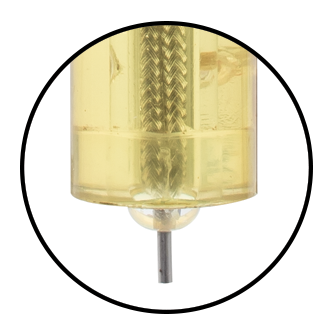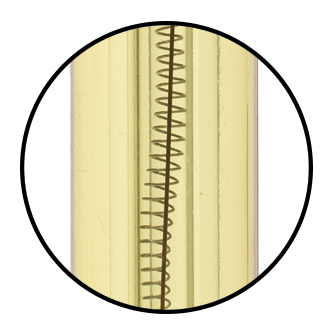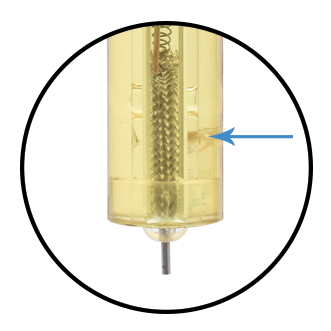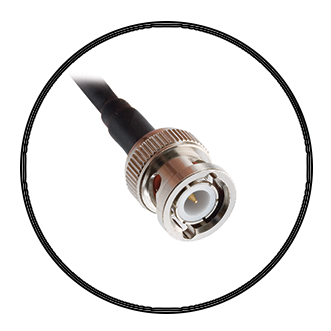Hanna Instruments offers a wide variety of ORP electrodes that are designed for many different applications. The type of material used for the sensing pin, type of glass used for body material, type of junction, type of reference and electrolyte used are just some of the design considerations.
The HI3230B uses a platinum pin, PEI body, single ceramic junction and gel electrolyte.
Platinum Sensing Pin
The HI3230B ORP sensor is made with platinum. An ORP sensor must be chemically inert; it cannot be oxidized or reduced itself. It must also have the proper surface characteristics to promote rapid electron exchange, a property known as high exchange current density. Two noble metals have proven to work well for this purpose: pure platinum and pure gold are both used in the construction of ORP sensors. The platinum sensor is often preferred because it is mechanically simpler and safer to produce. Platinum can be welded to glass and has the same thermal coefficient. The platinum sensor signal is carried through the electrode body, and together with the reference signal is conducted to the measurement meter.
PEI Body
The body of the HI3230B is composed of polyetherimide (PEI) resin. The PEI body is suitable for a wide range of applications and excels in field measurements due to its durability. The shielding around the spherical glass tip minimizes breakage due to accidental bumping or dropping of the electrode. The PEI plastic is a high quality plastic that is chemically resistant to many aggressive chemicals.
Single Ceramic Junction
The outer junction of an electrode, also known as a salt bridge, is necessary component of the electrical circuit. The movement of ions must flow through the junction for a steady reading. The outer reference has a single ceramic frit. A single ceramic junction has a flow rate of 15-20 μL/hour. Other junction types are available with higher flow rates and made with different materials.
BNC Connector
The HI3230B uses a BNC connector. This type of connector is universal in that it can be used on any pH meter that has the female BNC probe input. Other type of connectors include DIN, screw type, T-type, and 3.5mm to name a few. These types of connectors tend to be proprietary for a particular type of meter and are not interchangeable.
All prices are inclusive of GST and not all items are stock items, if you require an immediate solution please send an email to sales@hannainst.com.au or call us on (03) 9769 0666.
Free standard delivery: We offer free delivery within Australia on orders over $100, typically arriving within 5 to 7 days. Delivery times may vary depending on the courier service and the recipient's location. Free shipping is not available with other offers or discounts.
Same-day despatch: Place your order before 1 PM Monday to Friday for same-day despatch. Delivery times may vary depending on the courier service and the recipient's location. Subject to stock availability.
Please note that we do not offer shipping to PO Box addresses.











